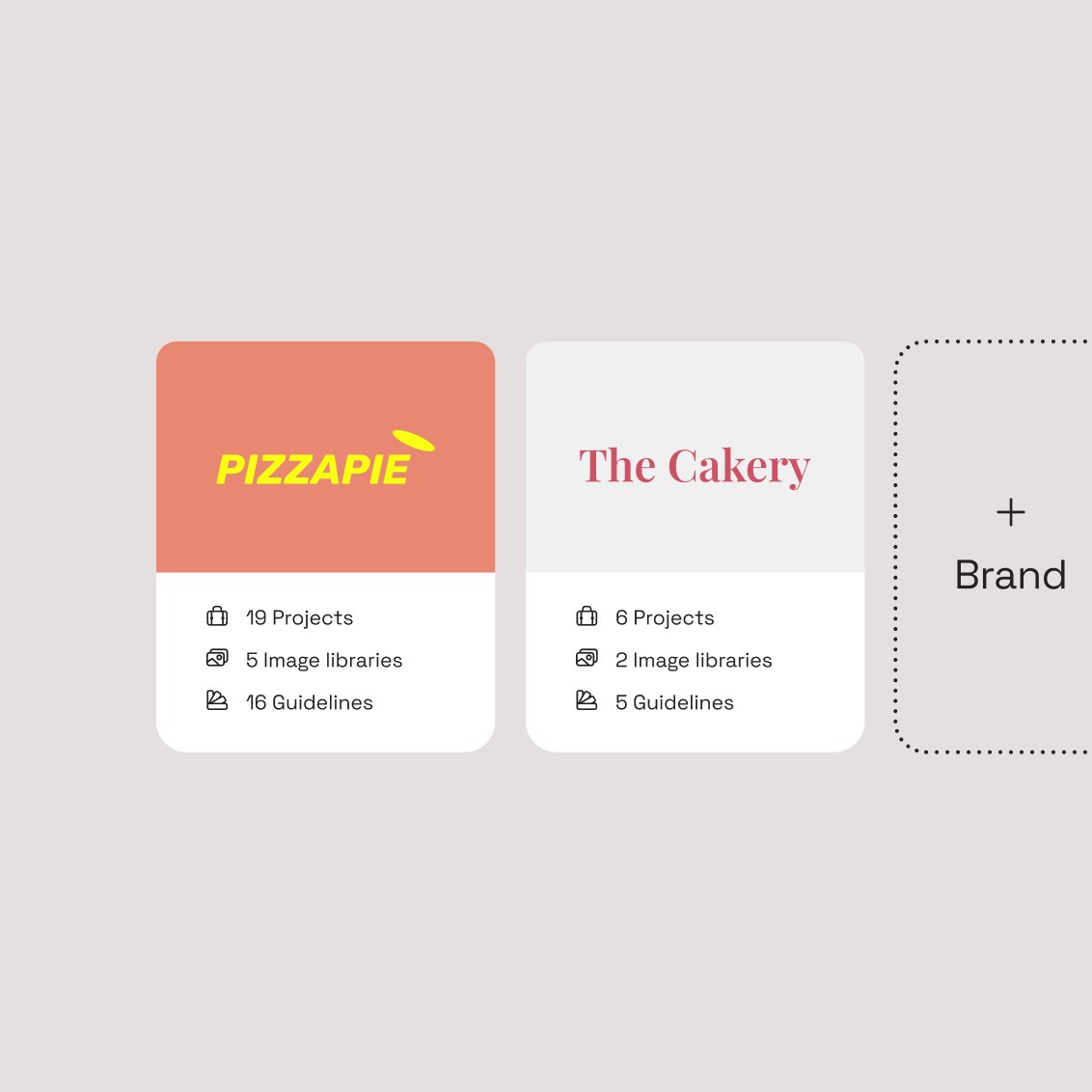What is creative operations?
Creative ops is a function within your creative team — the marketers, designers, content creators, and developers.
As highly resourceful people and experts in business operations, creative ops teams analyze how creative work gets done and improve productivity. In a nutshell, here’s what creative ops does:
- Eliminating process inefficiencies and bottlenecks
- Creating and optimizing workflows for creative campaigns
- Figuring out who needs to be involved to make each project successful
- Organizing brand assets and making sure team members have access
- Managing the department’s resources, time, and budgets
- Keeping tabs on technology and trends to optimize output and quality
- Choosing key performance indicators (KPIs) to track and assess performance

5 benefits of improving your creative operations
Expanding creative operations reduces delays and keeps campaigns moving smoothly — teams can focus on delivering high-quality results without any hiccups.
Boosting productivity
Creative ops professionals find and set up project solutions, map out each initiative’s scope, timeline, and hand-offs and then delegate day-to-day management to the creatives. By establishing clear workflows and using shared dashboards, creative ops professionals ensure everyone knows their responsibilities and deadlines.
Improving brand consistency
Creative operations centralize guidelines and asset management, strengthening consistency and cohesiveness.
Having designated creative operations ensures everyone has access to the same resources and guidelines, so all marketing materials reflect a unified brand image, no matter who creates them. For instance, a creative ops professional may create a shared style guide that outlines the correct use of logos, colors, and fonts.
Reducing time to market
Companies with creative operations teams often see faster time to market because their documented processes for approvals, design, and content creation keep work moving efficiently.
By establishing clear steps for each project phase, creative operations eliminates bottlenecks. For example, creative ops professionals can establish a standardized approval process where everyone knows who needs to sign off and when. This organized workflow speeds up the production cycle, allowing you to launch campaigns and products more quickly.
Optimizing collaboration across teams
Without designated creative ops, communication gaps and misunderstandings are common, leading to delays and frustration. Teams often work in silos, missing out on valuable input and feedback from each other. Creative operations improves collaboration between creatives, marketing, and sales by using integrated tools and platforms.
For example, a brand-building solution like Frontify enables teams to create and track workflows and leave comments on designs and other assets. A shared hub ensures that employees can access the latest updates and contribute effectively to foster a more cohesive and productive environment.
Centralizing digital asset management
Creative operations enhances digital asset management (DAM) by organizing and storing files in a centralized, easily accessible system.
Creative operations typically use a DAM solution such as Frontify to facilitate on-demand access to the relevant files. A DAM allows you to intuitively organize assets via tagging and offers search features that allow your team to pull logos, icons, and documents for their projects.
This streamlined approach saves time that you would otherwise spend digging through folders or fixing branding mistakes.
How to implement creative operations within your company
Investing in creative operations transforms how your team works, enhancing productivity and collaboration.

1. Hire a creative operations professional
Having dedicated creative operations specialists is key to improving your creative processes. This role focuses solely on managing and optimizing the necessary workflows, resources, and tools.
With a specialist in place, you produce higher-quality output more consistently and efficiently: Creative and marketing teams can focus on their core tasks, fostering a more productive and harmonious work environment. Essentially, investing in a creative operations professional means investing in your creative endeavors’ effectiveness and success.
2. Implement a brand portal and digital asset management
A brand portal and DAM system will help your employees organize, modify, and share your assets more efficiently. These tools support overall brand-building efforts by providing easy access to consistent and up-to-date resources.

Here’s how to implement them:
- Assess your needs: Determine what assets you have and how they’re currently used. Identify gaps and inefficiencies in your existing system.
- Choose the right platform: Select a brand-building solution that fits your needs. Look for features like easy upload and retrieval, version control, and access permissions.
- Centralize your assets: Gather all your digital files — including logos, images, videos, and templates — and upload them to the DAM, ensuring everything is organized in a logical structure with clear naming conventions.
- Set up access controls: Define who can access and edit each asset. Set permissions to ensure that only relevant people can make changes to keep your files secure and up to date.
- Update and maintain: Add new assets regularly and archive outdated ones. Review access permissions and guidelines periodically.
3. Establish clear guidelines
Clear guidelines are crucial for maintaining brand consistency and ensuring everyone uses assets correctly. A creative ops professional can help you establish these ground rules.

Here’s how they do it:
- Document visual elements: Specify logo usage, color schemes, typography, and imagery, including examples of correct and incorrect applications to avoid mistakes.
- Define usage rules: Create rules for how and where assets should be used, covering digital, print, and social media channels.
- Set up reviews: Establish a process for reviewing and approving creative work to ensure it adheres to the guidelines.
- Centralize guidelines: Keep all instructions accessible and updated in an online platform, ensuring everyone can easily find and follow them.
- Educate your team: Conduct training sessions to familiarize employees with the guidelines and how to apply them.
4. Use effective communication strategies
Effective communication is key to successful creative operations — it reduces errors, keeps projects on track, and fosters collaboration. Start by documenting your practices so you can refine them as needed:
- Detail processes: Outline your existing communication tools, methods, and schedules. Define regular check-ins and feedback loops.
- Choose the right tools: Use a messaging platform, such as Slack or Microsoft Teams, for quick updates and send more detailed project information through your brand portal or DAM.
- Foster open exchanges: Encourage team members to share ideas and feedback through the designated channels.
- Organize the information flow: Schedule meetings, newsletters, or updates via project management tools.
Establishing these strategies helps ensure everyone is aligned and can contribute effectively to the success of your creative operations.
5. Leverage analytics
Use data to better understand your performance, refine your creative operations, and make informed decisions.

Here’s how you can get the most out of your analytics:
- Define KPIs: Identify relevant metrics, such as project timelines, budget adherence, and content performance. These metrics will guide your analysis and help you measure the impact of your creative initiatives.
- Use tools: Collect data using your DAM system’s analytics features — a robust platform like Frontify will provide detailed insights into metrics such as asset usage and engagement.
- Share insights: Communicate your findings through dashboards, reports, and presentations. Making the results accessible ensures everyone on your team understands the developments and can act on them.
- Keep improving: Experiment with new approaches based on your insights. Track the effectiveness of these changes and continue to iterate for better results. This ongoing analysis helps you stay proactive and adjust strategies as needed.
By leveraging data and analytics, you make informed decisions that enhance efficiency and outcomes, ensuring that your creative operations are aligned with your goals.
How Frontify enhances creative operations
A brand-building platform helps you enhance your creative operations initiatives by providing the structure and tools needed for success.
Frontify is a powerful solution for creatives. With Frontify, you can streamline workflows, centralize assets, and maintain brand consistency. Whether you're a dedicated creative ops professional or part of a team, Frontify provides the resources you need to enhance productivity and collaboration.
To understand how Frontify’s brand-building platform improves your creative operations, sign up for a demo today.


